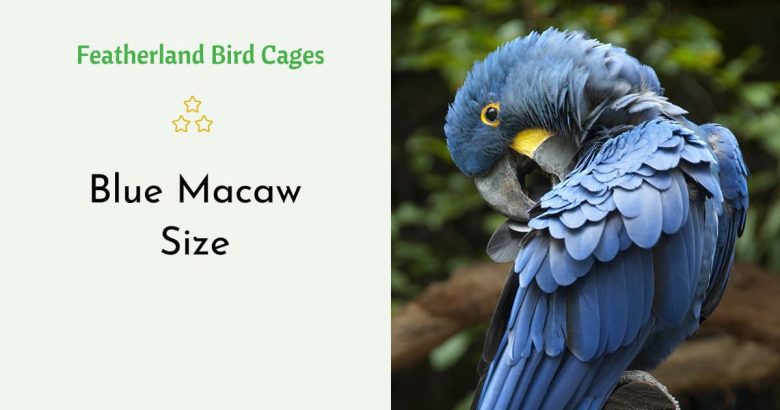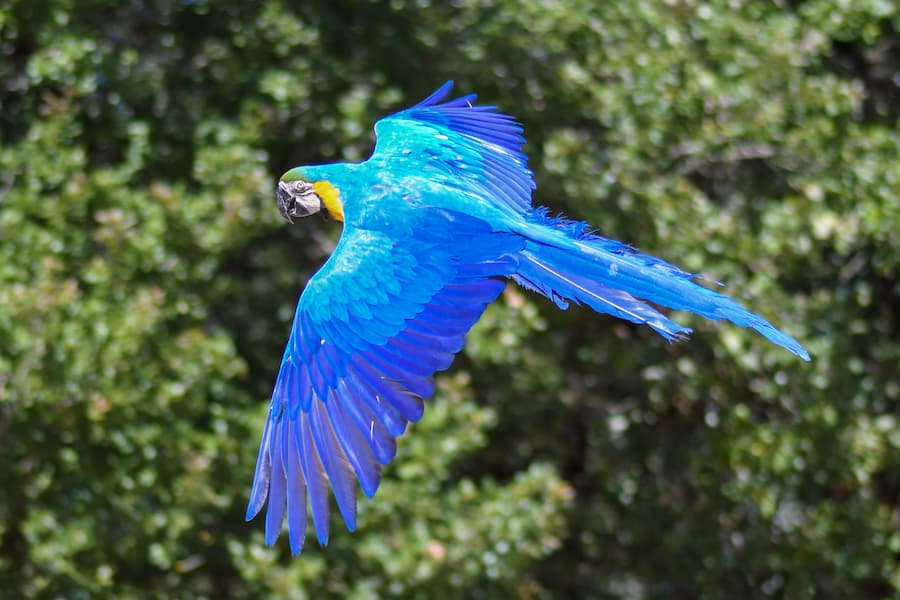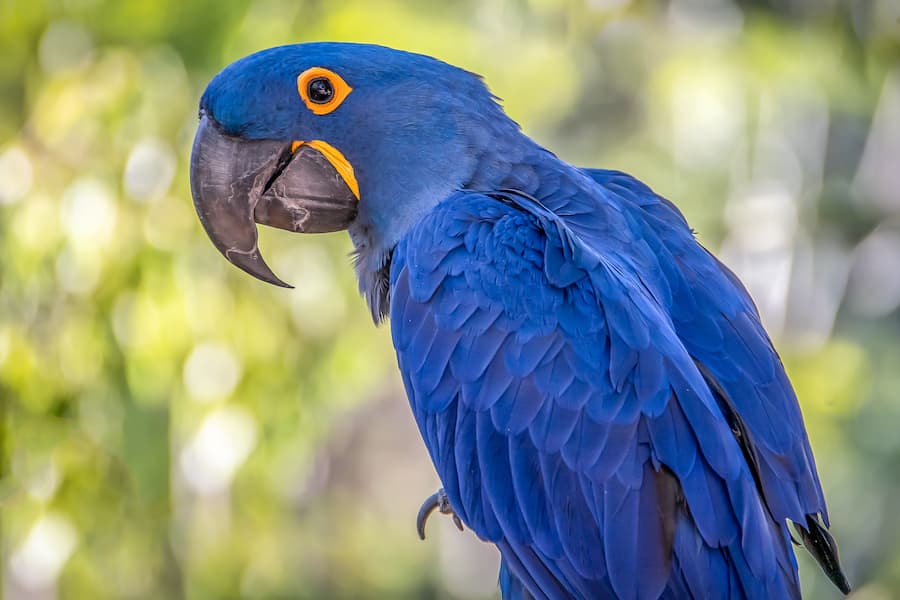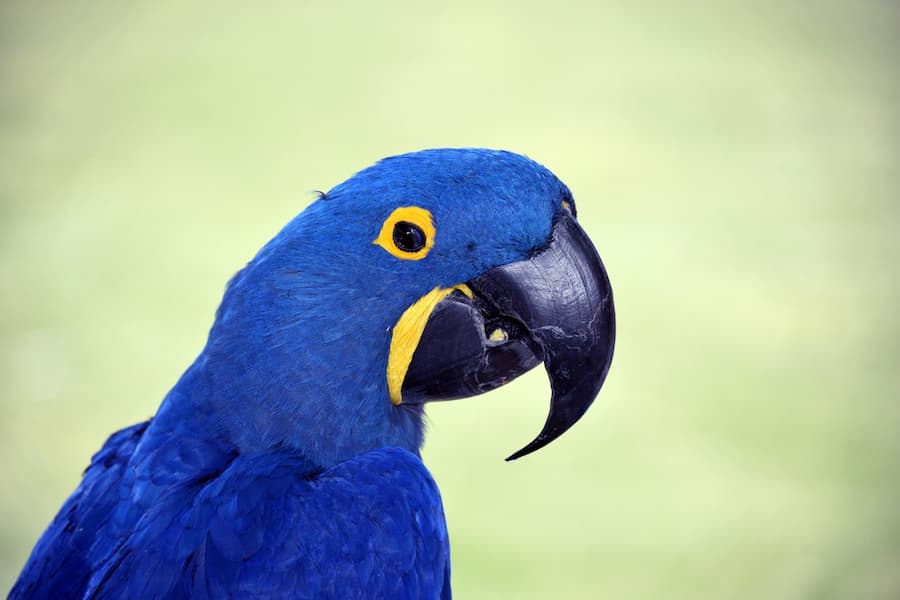Blue Macaw Size

Blue macaws are large parrots that have a vibrant appearance. They’re a majestic species that is often kept as pets. These birds are strong and intelligent. They require a large cage for them to thrive.
Habitat destruction is a problem for countless species, and the blue macaw is no exception. Thankfully, conservation efforts and a decrease in the caged bird trade are giving researchers hope for the future of this species.
Wingspan
Typically, the blue macaw has a wingspan of about 41 to 45 inches. The bird also has a long tail that extends up to 2 feet. They are very active birds that require large cages and plenty of outdoor time.
These birds can live up to 30 years in the wild and 60 or more in captivity. They can even outlive their owners if well-cared for. However, they are prone to stress. If they are kept in small, crowded cages, it can cause them to become aggressive or even depressed.
Macaws feed on seeds, nuts, fruits, leaves, and flowers. They can even eat some plants that are toxic to other parrots. They are monogamous, and mates usually pair for life. In the wild, they breed in the rainforest or wooded areas. The eggs are incubated for about a month. The chicks then fledge at around four months of age. The hyacinth macaw is the largest species of macaw, with a wingspan of three to four feet.
Weight
The blue macaw, also known as the hyacinth macaw, is a stunning bird. Its cobalt-blue coloring and massive size make it a focal point in any setting. The hyacinth macaw is the largest parrot species in the world and can be found in zoos, wildlife parks, and private homes. It is an intelligent bird with a bright yellow chin and hooked beak.
A healthy adult blue macaw will weigh about 900 to 1500 grams. However, the weight of a macaw may fluctuate depending on its diet and lifestyle. A good pet owner should monitor their macaw’s weight to ensure its health.
In captivity, blue and gold macaws can live up to 80 years. They are intelligent birds and can bond well with humans. However, they need to be kept in large cages to allow them to fly and play freely. It is important to feed them a balanced diet that includes fresh fruit and vegetables.
Tail length
Macaws are in the psittaciform family, which includes other birds commonly known as parrots. They are a beautiful species that can bring joy to humans as they interact with them. But sadly, like many other creatures on the planet, they face numerous threats.
A common threat is habitat destruction, which is a major problem for countless species, including blue macaws. They require a “goldilocks”-type environment, which is neither too dense nor too open. Their survival also depends on a number of other species.
Another threat is the caged bird trade, which is responsible for steep declines in wild blue macaw populations. These birds are sold in pet stores and exported to other countries as pets. While the captive trade has been banned, it still exists. These animals can become quite violent in captivity. It’s important to socialize them properly and provide adequate mental stimulation so they don’t resort to screaming out of boredom. Despite these threats, blue macaws are beautiful birds that should be protected.
Body length
The blue macaw’s body length is a little more than 35 inches and its tail is around half that size. This species uses a form of camouflage called countershading, which means that the bird is colored differently on both sides. This helps it blend in with the foliage of its natural habitat.
This is a species of bird that is found in tropical and subtropical forests from Panama to Argentina. They prefer forest edges and open savannas. Flocks often roost together in the afternoon and evening.
These birds eat seeds, fruit, nuts, flowers, and leaves. They are also known to eat clay, which is thought to help neutralize some of the toxins in their diet.
The blue macaw is a large parrot that can live for 60 years or more when kept in captivity. It is a sociable bird that can learn to talk and will bond closely with its owner. It can be a challenge to keep a blue macaw, as it requires lots of space to fly and forage. It can also be a bit destructive, so a cage should be sturdy.




